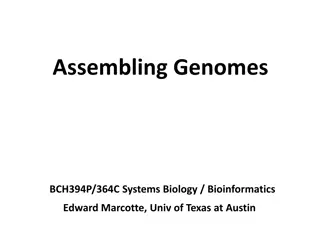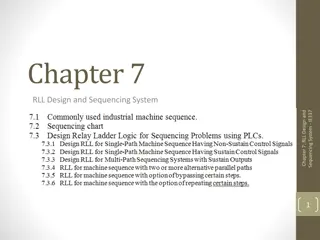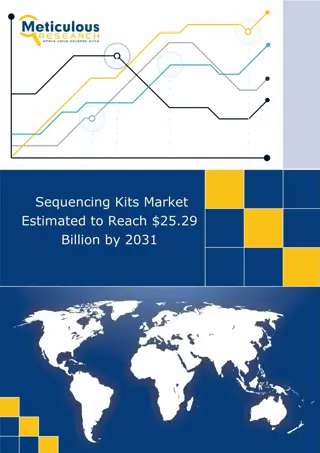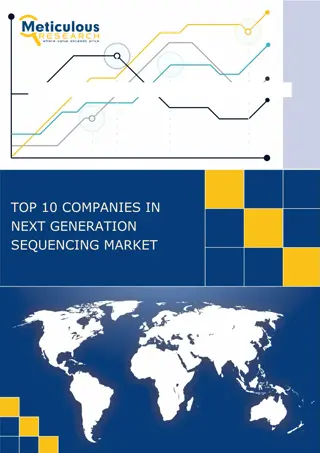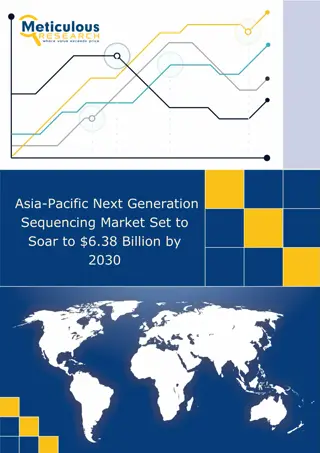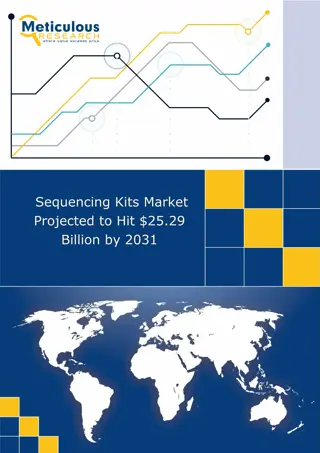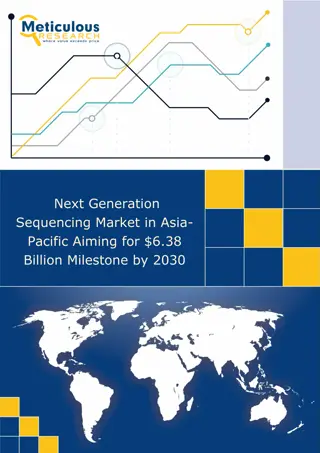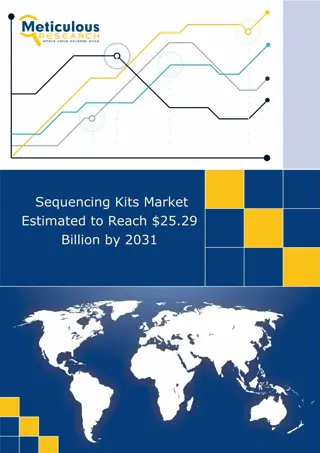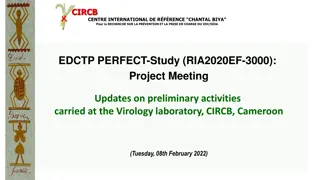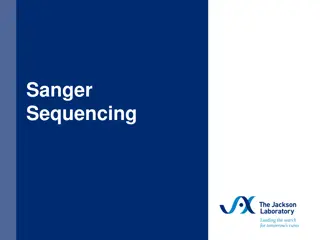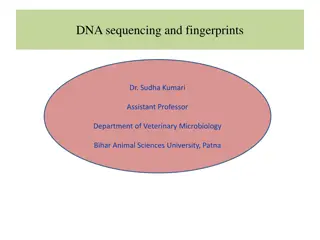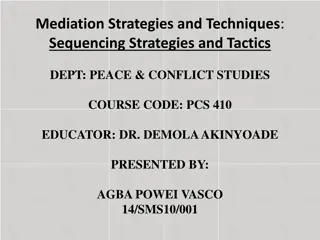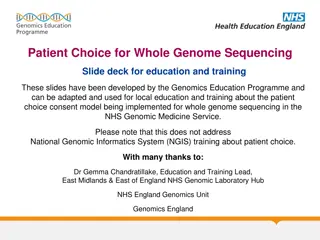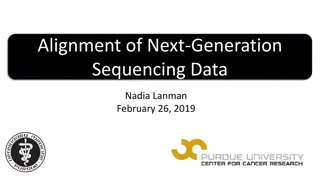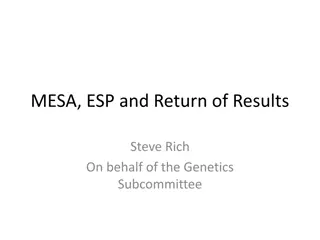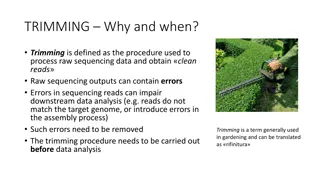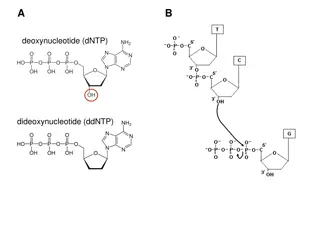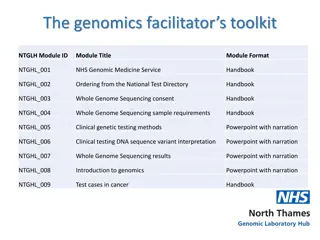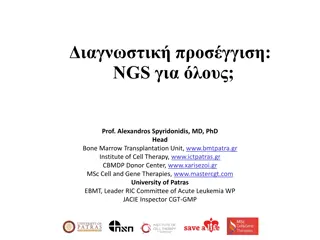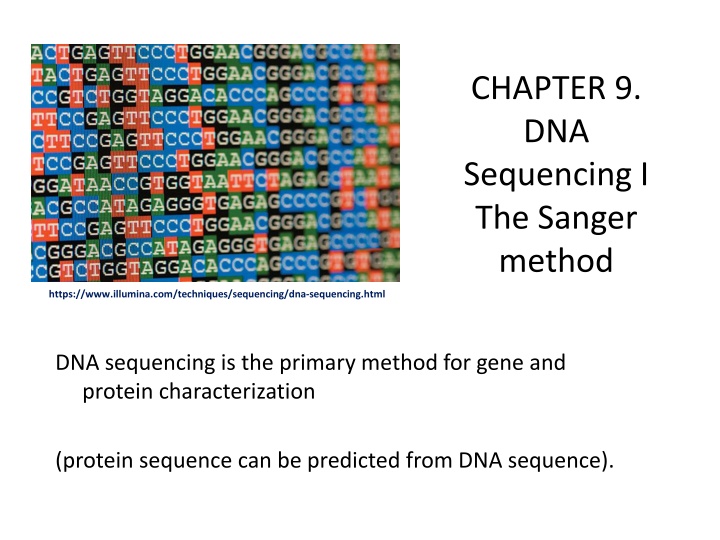
Overview of DNA Sequencing: Sanger Method Insights
"Explore the Sanger method of DNA sequencing, a fundamental technique for gene and protein analysis. Learn about Frederick Sanger, examples of genomes sequenced, and common practices in DNA sequencing processes."
Uploaded on | 1 Views
Download Presentation

Please find below an Image/Link to download the presentation.
The content on the website is provided AS IS for your information and personal use only. It may not be sold, licensed, or shared on other websites without obtaining consent from the author. If you encounter any issues during the download, it is possible that the publisher has removed the file from their server.
You are allowed to download the files provided on this website for personal or commercial use, subject to the condition that they are used lawfully. All files are the property of their respective owners.
The content on the website is provided AS IS for your information and personal use only. It may not be sold, licensed, or shared on other websites without obtaining consent from the author.
E N D
Presentation Transcript
CHAPTER 9. DNA Sequencing I The Sanger method https://www.illumina.com/techniques/sequencing/dna-sequencing.html DNA sequencing is the primary method for gene and protein characterization (protein sequence can be predicted from DNA sequence).
DNA sequencing is done either as an end product to see what sequences the samples contain, or as a confirmatory step before proceeding to genetic engineering http://wiki.biomine.skelleftea.se/biomine/molecular/index_10.htm
Frederick Sanger (1918- 2013) British biochemist Twice the recipient of the Nobel Prize for Chemistry. 1958 "for his work on the structure of proteins, especially that of insulin http://www.sanger.ac.uk/ 1980 Walter Gilbert and Sanger shared half of the chemistry prize "for their contributions concerning the determination of base sequences in nucleic acids. /Wikipedia
Examples of genomes sequenced with Sanger technology Human Model organisms - mouse - yeast - E. coli - Drosophila melanogaster (fruit fly) - Ceanorhaditis elegans (nematode) - Arabidopsis thaliana (plant) cDNA libraries, genomic clones of endless # organisms
DNA fragments are sequenced using primers that anneal to the plasmid at either side of the multi-cloning site. (some are commonly used and commercially available e.g. M13 forward and reverse, T3 and T7) Sequencing from one direction will sequence one end of fragment and one strand of fragment Sequencing from the other direction gives the sequence of the other strand In general we prefer to do two sequences, one from each direction, to have confirmation of the sequence Sequencing primer Sites flank MCS
Common practice Purify plasmid Send two aliquots of same plasmid to company for sequencing ask them to sequence inserted fragment: aliquot 1. using primer M13 forward (matching one strand on one end of MCS) aliquot 2 using primer M13 reverse (matching other strand, on other end of MCS Company will use these primers as starting points for sequencing, and return DNA sequence read (700-1000 bases) in a few days (for $5/sequence read) HOW DOES IT WORK? DNA SEQUENCING IS STANDARD PROCEDURE. EMPLOYS MANY PEOPLE

